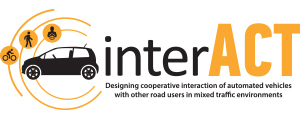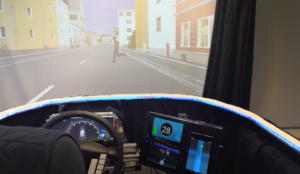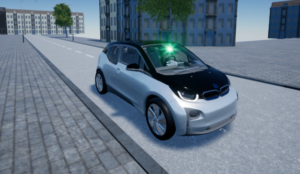Iterative design of suitable human-machine interfaces
The key to successful interactions between automated vehicles (AVs), the on-board user and other traffic participants is good communication through suitable human-machine interfaces. During the last months WP 4 partners started to assess the different interaction strategies in several user studies. Using the preliminary interaction strategies (D4.1 ) as a basis several variants of external HMI and on-board HMI solutions currently undergo thorough user testing in different methodological settings. We gather user feedback and insights into the user needs and the mechanisms underlying human decision making when encountering AVs equipped with external human-machine interfaces. Furthermore we try to understand what kind of information user on board of an automated vehicle need to trust and accept the automated vehicle. In total we are running 10 different studies in the research facilities of BMW, ITS Leeds and DLR. BMW, DLR and ITS Leeds are using virtual reality, driving simulators as well as newly developed pedestrian simulators to assess different external and on-board HMIs and their benefits and shortcomings. For the studies we transferred the construction data of the interact demonstrator vehicle, a BMW I3, into virtual reality. This virtual BMW I3 contains all of the possible interACT HMI designs and can now be assessed by engineers as well as research in user studies to improve the design further before building up any prototypes. The results of the user studies will be used to select the final interaction strategies of the interACT project and will be published in D4.2 (expected end of April 2019) and disseminated in research papers and at HMI conferences.





